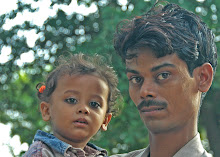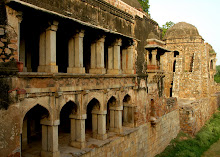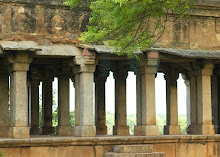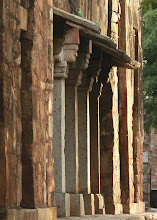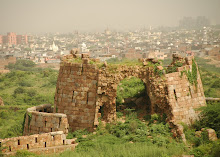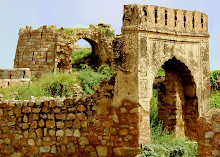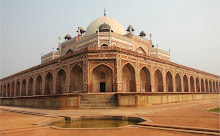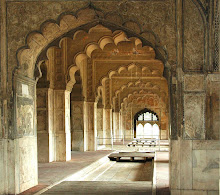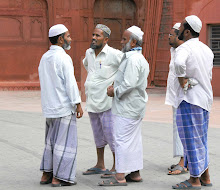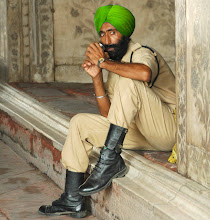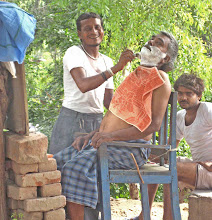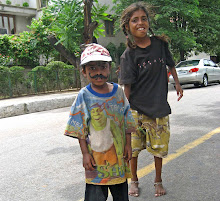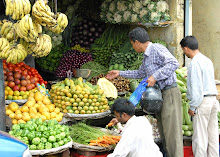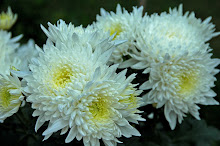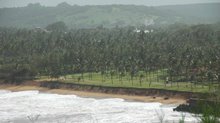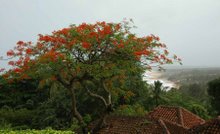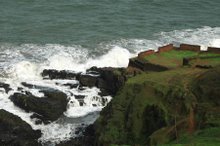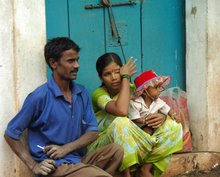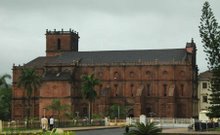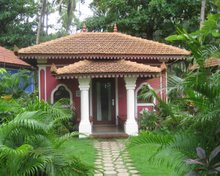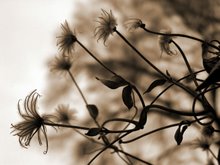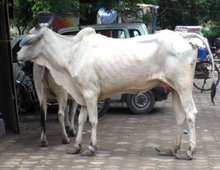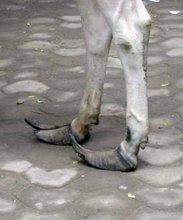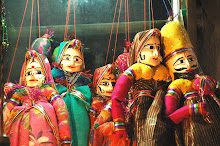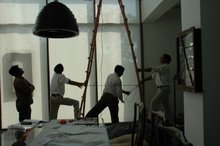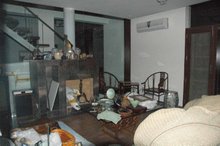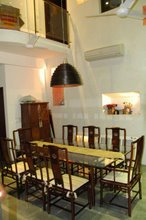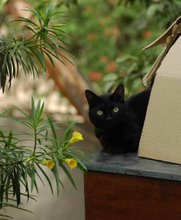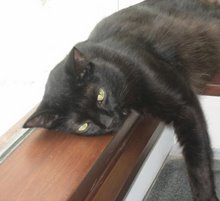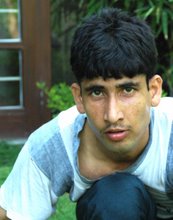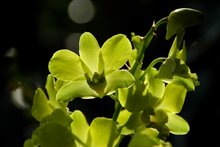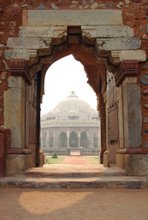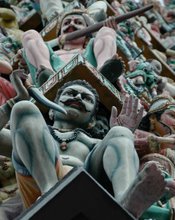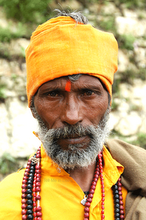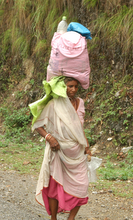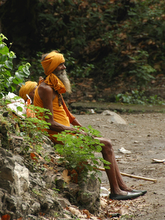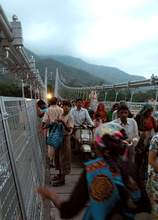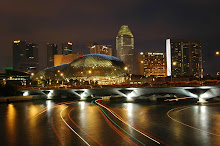Friday, December 21, 2007
Looking Back, an Apprentice Update and a Little ETC.
Smart & versatile as Suresh is, he is an utter failure at laundry and keeping closets neat. He can't keep the hangers facing the same direction nor keep the long-sleeved office shirts apart from the long-sleeved casual shirts or even the short sleeved shirts. Fortunately, David is the epitome of tolerance so the situation is livable. However, I go through the closets every other week and into a frenzy of reorganization. I have yet to understand why this is so difficult! My shoes & clothes are off limits to Suresh. How confusing it must be to have daytime casual sandals, daytime going out shoes, shoes that only go to C block market, sandals worn only after a pedicure, summer shoes, winter shoes, clay court shoes, hard court shoes, and the baffling categories continue! How can I expect dear Suresh to understand this? Suresh who keeps a pair of sandals for the summer and a pair of closed shoes for the winter. He has graduated to having a sporting pair of Adidas after David saw him wearing sandals in the increasingly cold mornings. Perhaps the abundance is so foreign to Suresh that his mind cannot build a working system to sort it all out.
I have been fortunate to have Mr. Lal come in twice a week. A wizened man of 70 or so, he handles the iron as a calligrapher would his pen. He has elevated laundry and ironing to an art form! David's shirts are perfectly pressed. My pants are pressed with or without a center line as I please! Organza comes back as crisp as it was when purchased. Pajamas are pressed and meticulously folded. If that is not luxury, what is? If somehow I could clone a Suresh with a Mr. Lal thrown in, I would have the best of them all!
Faithful Ambrose has continued his unwavering service. Aside from a few language based misunderstandings, we have gotten along quite well. He is always ready to take me here or there, never slacking off on his driving duties. He tends to gun the car once in a while but driving through so much traffic daily, the urge to zoom a bit now & again is understandable. His sense of direction needs to be honed and I have given him the ever useful Eicher map of Delhi. I might quiz him now and then but that would also mean a bit of studying on my part.
Ambrose has shown me his gentility and fine upbringing. When Aaron was born, he brought me two sinfully delicious cakes that his father had baked, brought sweets for Suresh & Panna. When Angel, his wife, finally came into their home after her stay with her family during her last months of pregnancy, he asked to come and introduce both her and their new baby. He came one Sunday afternoon beaming and proud to introduce his family to us. What a gesture of respect he has shown me. I remember clearly the day we drove Rachel to the airport after her summer with us in Delhi. Ambrose was quiet then softly said that he understood how sad I felt and that we should pray for her safety. I was touched by his empathy. Though he has kept his distance as is proper with the employer/employee relationship, he has nevertheless demonstrated that he has a heart for David & me. No truer person shall I find. Ambrose is certainly a finalist too.
Raju, David's driver continues to test me. Everything seems to go over David's head as he is always preoccupied with business. But Raju's white-turned gray shirts, long nails and inattentive behaviour has continued to grate at me. He has come late so that David had to drive himself to the airport. Another instance, he came late as his motorcycle ran out of gas! David, the ever patient and forgiving boss merely turns on his computer and does his work while waiting for Raju--this even after he has to miss a morning meeting! Clearly God has given David patience and God has gifted me with the feistiness to never give up in trying to make things right for him. This is not to say that David does not recognize the failings; he does but this is not high on his priority of things that need his attention. Raju will always be on the end of the gangplank with me on the safe end holding him at bayonet point!
Life has become easier since I found my favorite C-block chemist, the best hair-care specialist in Basant Lok, the fruit wallah in A-block, the chorizo at Le Marche, my DVD guy who delivers anything for 100 rupees a piece, Salsa Puja, the colorful flower street on MG Road, and of course, life would not be complete without the most entertaining jewelry store in Khan Market!
Though I am still stumped now and again by the craziness and unfathomable that Delhi can sometimes be, I can, after 9 months say that I am home.
Friday, November 23, 2007
85 Down, 915 to Go! The Pushkar Cattle Fair
I diligently waded through the many websites that touted luxury accommodations for this mela (fair) which would swell the population of the small town with visitors and avid photographers. I chose a luxury tent a stone's throw away from the fair. It promised Maharajah style luxury and I thought to myself that if it was good enough for a Maharajah it should be good enough for David and me. After over 8 hours on the road we arrived at the campsite farm of our luxury tent. I may not have thought this through...did the Maharajahs enjoy the indulgence of hot running water back then? Our green carpeted tent had two single beds pushed together, a solitary little red lamp on a side table, a rickety black metal luggage stand all housed in the vinyl tent which did not provide much protection from the freezing cold of the desert. A canvas door led to the facilities...a spacious brown carpeted room with a flushing toilet, a wok-looking sink, and a 4' x 4' square metal basin sitting on the carpet with a low faucet and a bucket. I quickly realized that the Maharajahs probably travelled with an entourage including 10 minions just to heat up bath water! David and I quickly got ready for bed, and yes, this did not include my almost ritual ablutions. Under the covers we slipped, popsicle toes and all, cold and unwashed! Surely this is how the Maharajahs did it? A window was above my head. Exhaustion caused me to drift to sleep quickly only to be awoken by the cold air seeping through the window. I fumbled for my now very precious red cashmere shawl, turbaned it around my head as the tribal dessert men do and curled up closer to David who was now designated as my personal radiator.
As an amateur and ambitious photographer, I requested that hot water to be brought into our bathroom at 6am the next morning. I planned to get up early, greet the day and the languid camels by the time the sun rose to light the dunes gold. I would then click away and capture the idyllic photograph I would proudly show Sharma sir upon my return. 6:00 am came and all was still at the camp. No one stirred. No hot water either. I decided to go back to sleep thinking better of my ambitious plans.
Finally ready to explore Pushkar before breakfast at 8:00, we took a quick drive around town plotting our course for the day. From the car window I spotted an amazing field of pink. A mellow rose aroma surrounded us as we got off the car. Yes, it surrounded and embraced us, an aroma so sweet, a sight so splendid that it caressed all the senses. I have never loved the rose as much! Rose petals covered the grounds. They were to be dried for medicine. What a sweet cure it must be!
Pushkar is a sleepy town in eastern Rajasthan. It sits on the edge of the small and beautiful Pushkar lake. It is believed that during the kartik month of the Hindu calendar, the lake takes on magical powers: a dip in the lake will purify the body and cure all ailments. It is at this same time of the year that the frenzy of activities and the riot of colors of the desert tribes takes over the town in the grand scale Pushkar Cattle Fair.
Ambrose drove as close to the mela as was allowed. A road block and uniformed police stood at the entrance to the pedestrianized grounds. The freezing night temperature gave way to a hot dessert day. All manner of kiosks and stands were set up on the side of the roads. Mahendi men laid out their blankets and woodblocks; women sat with their children as they displayed their metal woks and cooking implements. Fruit and vegetable carts were plentiful; bangle bazaars, frying food stalls, cotton candy men all contributed color and dazzle to the already festive air. Richly festooned camels walked about.
Tall and lean old mustachioed men donned chartreuse, fuchsia, and gold colored turbans. The women in their bright ghargas, arms covered in bangles, noses pierced with three-inch loop nose rings walked in groups sometimes their faces covered, but more often with wide friendly smiles. The children, forever inquisitive, marveled at my camera and requested "one photo please." I always obliged when there was no enterprising mother close by who would bill me 10rupees per shot! The one constant in every Indian city I have visited is the persistent peddler, whether he be selling camel rides, guides to the festivities, a Pushkar photo book, or anything at all. They too roamed the grounds and it became tiresome saying no to all the offers of a desert safari.
There were many scheduled events for the day: turban tieing contests, best mustache contest, camel decoration contest, camel races. However, try as I did to follow the events as listed on the fair announcement, the events never occurred when they were supposed to. I guess everyone just went with the flow of the day, conducting this contest or that whenever it was convenient.
The camels! Festooned in plastic roses, colorful ropes, ribbons, yarn pompoms, feathers, sequins, beads, mirrors, and anklets, they alone were a sight worth travelling 8 hours for! They walked obediently, parading the opulence of their ornamentation. What docile uncomplaining animals they seemed to suffer through all the "make-up" and "get-up"!
We meandered on to the cattle ground. Camels, horses, cattle were about. Some were strong, handsome and sturdy and it was clear they would fetch higher prices. Others looked old and tired. They were scattered on the sand dunes tethered to their owners tents. They stood patiently eating their grasses oblivious to the activity and frenzy of the deals struck around them. Men sat in groups checking out the livestock, bargaining back and forth. This was the heart of the fair, the center where business was conducted.
Taking a respite from the mela we joined the moving crowd to the bathing ghats: all roads in Pushkar seemed to lead to the 52 bathing ghats. Priests performed pujas continuously and led people through the rituals of taking the holy dip in the lake. The frenzy of the mela was transformed into the solemnity of purification. How I would have loved to see the final day of the festival when the faithful set afloat a hundred lights on the lake with the full moon shining above!
We returned to our tents for an afternoon nap and an early dinner. In the evening, we returned to the mela for more festivities--more dancing, more pageantry and color, more music, more tradition...a whole day and evening of imbibing the ambience of the festivities was worth the trip after all. Perhaps I did not see the romantic golden dunes and the languid camels. Perhaps our tent was a far cry from its claim to luxury. But the color, the vibrancy, the solemnity at the ghats, the festooned camels were all worth the long drive to Pushkar.
1,000 Places to See Before You Die--I am crossing Pushkar off my list now. 85 down, 915 to go!
Please click on the link below to view my photographs of the Pushkar Mela.
http://www.facebook.com/album.php?aid=8774&l=e7454&id=686591597
Wednesday, October 31, 2007
Close Encounters of the Third Kind
Our doorbell rang at 7:20 that morning. Over the past week, no one came to my door in the morning except Raju. Still dazed with very little sleep the previous night with mozzie's buzzing around me (no one told me about Odomos or All Out) and the airconditioner out of commission, I stumbled down to open the door.
As soon as there was a crack in the door, four brightly sareed women with loud voices appeared. "Namaste Madam!"
"No, no, no, I don't want it!" was all I could stammer thinking they were door-to-door peddlers. Now that I think about it, they could have been Avon ladies! I screamed for David but he was in the shower and could not hear me. (He would not make a very good Superman, would he?)
The strong ladies pushed the door intending to come in or at least be heard and I pushed back. The pushing and loud voices continued for what seemed like an eternity until I finally managed to close the door. In the span of what was really only a few seconds, what assaulted me were four powdered faces, red lipsticked lips, bindi-ed foreheads. Their dress was tawdry. They were rather large boned women, dark, and loud.
I ran up to David and told him what had happened. As far as I knew, four women tried to rob me and break into my house! That's it, we're moving back to Singapore! I sobbed and shook then quickly became angry at the security guard who let these women go past the gate, climb up the stairs, then ring my doorbell! What was he thinking? How useless was he down there? I demanded that he be fired, and fired he was the very next day.
Our first source of information was Raju, our driver. After recounting the story to him and asking him exactly who these women were, he gave us rather sketchy information. Raju's command of English leaves much to be desired.
'Sir, not man, not woman. Middle class."
"What?" but at that point, we both understood what Raju was trying to say. What we did not understand is why they would bang on our door at 7:20 in the morning. If I have piqued your curiosity, and hopefully to make you understand how visually shocking this all was, visit this link: http://images.google.co.in/images?q=hijra&hl=en&client=firefox-a&channel=s&rls=org.mozilla:en-US:official&hs=n6O&um=1&ie=UTF-8&sa=X&oi=images&ct=title
These "ladies" are hijras.
"Most hijras live at the margins of society with very low status: the very word "hijjra" is sometimes used in a derogatory manner. Few employment opportunites are available to hijras. Many get their income from performing at ceremonies, begging or prostitution — an occupation of eunuchs also recorded in premodern times. Violence against hijras specially sex workers is often brutal and occurs in public spaces, police stations, prisons and their homes. As with transgender people in most of the world they face extreme discrimination in health, housing, education, employment, immigration, law, and any bureaucracy that is unable to place them into male or female gender categories. One hijra reports waiting in the emergency room of a hospital for hours while medical staff debated whether to admit her into the men's or women's ward.
Hijras are often encountered on streets, trains, and other public places demanding money from young men. If refused, the hijra may attempt to embarrass the man into giving money, using obscene gestures, profane language, and even sexual advances. Hijras also perform religious ceremonies at weddings and at the birth of male babies, involving music, singing, and sexually suggestive dancing. These are intended to bring good luck and fertility. Although the hijra are most often uninvited, the host usually pays the hijras a fee. Many fear the hijras' curse if they are not appeased, bringing bad luck or infertility, but for the fee they receive, they can bless goodwill and fortune on to the newly born. Hijras are said to be able to do this because, since they do not engage in sexual activities, they accumulate their sexual energy which they can use to either bestow a boon or a bane." Wikipedia http://en.wikipedia.org/wiki/Hijra_(South_Asia)
So why me? They come to give their blessing to new homes, new babies, new marriages. I was in a new home thus needed their blessings and of course, they needed their "blessings" too. I later learned that they come to Indian families only so I was even more angry that they had invaded me. Someone else warned me that they would return again and again until they extorted their payment. Just what I needed in this already tumultuous adjustment to India!
Our downstairs neighbor had not moved in but even before they did, the hijras would circle our block and wait it out downstairs hoping to catch them. They finally succeeded but shrewd Nuwayri was ready for them. The hijra wanted 55,000IR. After two hours of haggling, she had them down to 3,000IR and two sarees! Even in this madness there is protocol! Ambrose, my driver had a baby and he knew the hijra would come around. They came to his father-in-law's house to give the baby their blessing.
I've put all this behind me, forgotten, locked away in my storybook of tales to tell my grandchildren someday. Until Monday.
I met Sidharthe, a most wonderful young man, proprietor of a lovely recently opened jewelry store in Khan Market. If you don't already know, I can sit in a jewelry store for hours just looking and touching and enjoying everything around me. This was such an afternoon. We sat talking shop, trying to outwit each other gemologically, watching customers come in and out. In the mid-afternoon bustle, the hijiras came.How clever they are to come when they can be the most trouble, when they can create the biggest distraction.
The immediately zoomed in on Sidharthe sitting behind his desk. I watched his smile disappear and his eyes narrow with annoyance. Fear was not far behind I am sure, but he held his own, kept his cool. I saw him pull out a few bills from his stash hoping that he could make them go away quickly. Hijra #1 came in speaking loudly. I can't tell you how the exchange proceeded. I can only tell you that there was a lot of pushing and pulling, a lot of arguing. Surely a few expletives were unleashed as well. This continued for a few minutes until they began to approach him and invade his very private space, touching him with thier dupattas, brushing his face with it, coming very uncomfortably close. His voice went up a notch, theirs escalated as well.
We now had two hijras in the room. A very confused and annoyed German lady was asking to just pay her bill so she could get out of the way but no one was paying attention to her. I quietly explained to her what was going on (I am now an expert!) and she waited patiently. I cautioned her to watch her purse. Hijra #2 must have seen her pull the purse closer to her body and she started lambasting the poor lady. Not knowing any Hindi but catching some words uttered in English, I knew she was incensed that we would even suggest that they would steal, as though extortion were not exactly the same thing. She continued to almost scream behind me but I stood my ground, never turned to look at her (horrors!) and allowed her to rant and rave unacknowledged.
Haggling went on and I worried that they would get the better of Sidharthe. Remember that three men stood guard at the door and yet the hijras were able to enter the store. That is the magic they weave, the power they wield. What chance did good Sidharthe have over the wicked? But the good prevail and after more back and forth, more screaming, and fortunately not more touching, Sidharthe triumphed and they were gone. A big sigh of relief.
Not many are fortunate enough to experience the unfortunate twice over. I was, and after all is said and done, I have a story to tell, an experience to laugh about. It wasn't so bad after all...but this I can only say in retrospect, after the 6 months it took me to recover. Perhaps my first encounter helped me cope with the second, wiser now and more steady of heart, yet only clever enough to stay mum while the proceedings continued. Yet, were there to be a third encounter, I am still not certain that I would fare much better. I believe the hijra will always evoke in me a fear, a deep fear of the unknown and ununderstood.
Tuesday, October 30, 2007
Oh Calcutta!
Of all the cities in India, Calcutta in particular suggests unbearable poverty to me. I remember my father recounting his visit to Calcutta in the very early 1970s. Coming from a third world nation, we Filipinos are not new to poverty being around us; however, his recount was so vivid, and his feeling of desperation at the poverty he saw stayed with me. Though decades might have changed or even reincarnated India, I was prepared to see the deprivation of poverty in Calcutta.
Calcutta, now known as Kolkata is one of the world's greatest cities. From an obscure village on the banks of the Hooghly river, it evolved as the capital of Great Britain's Indian empire. Over the 200 years after the establishment of an English trading post by Job Charnock in 1690, Kolkata flourished, a commercial city with Victorian Gothic buildings, churches, and boulevards. In 1911, the capital was shifted to New Delhi and coupled with the urban decay of the 1960s, Kolkata's affluence diminished, but as I have witnessed, not its vibrancy and color.
We made a smart decision to stay outside the city though the commute into the city office was 40 minutes, through dusty and bumpy roads, twisting and turning, vegetable & fruit vendors with their merchandise laid out on the sidewalks, people milling about busily, bicycles boldly darting in and out of traffic. I must applaud Rajendra, our super driver for navigating these streets expertly twice a day. I dared not watch the road and as usual, I took my nap en route to the city or hotel. I only know that Rajendra got me there!
We arrived Kolkata with time to spare before David's first meeting in the afternoon. Our hotel was a Vedic spa so we took the lead of its peaceful surrounds and took the morning easy. We enjoyed a wonderful lunch at their restaurant. Vedic, yes...we attempted to order a couple of very healthy sounding juices only to be cautioned by the waiters that the juices probably would not taste very good. Nonetheless, we ordered them and instantly felt rewarded by the many good things it was doing to our bodies. I ordered a "sprout route" which turned out to be a delightfully nutty sprout salad with a ginger and lime kick to it. (I recreated the salad to go along with last night's dinner, it was equally tasty). Lunch was wholesome, healthy, and actually tasty.
Magic Rajendra drove us to the city that afternoon. I visited the Victoria Memorial, Kolkata's most celebrated landmark. This domed classical structure, completed in 1921 was made with marble from Makrana which also supplied marble for the Taj Mahal. It is now a museum and houses 25 galleries which feature Raj memorabilia. Again, as with all public buildings and parks, the museum was full of people, some tourists but many locals as well eagerly perusing the exhibits. There were numerous paintings and sketches depicting life during the Raj. In particular was a series of sketches with commentary--a British family of four needed 110 people to attend to their needs! We've certainly come a long way! Every other family I know in Delhi today has one or two in their staff (outside farm houses) so I do wonder why I am having such a difficult time finding my apprentice! There should be thousands upon thousands of available help!
Many years ago, I had the privilege of spending one night at a convent in Rome. In that evening, I experienced joyous tranquillity. There was a complete absence of distraction and discord. The kindness and love were palpable and intense. This is the same feeling that greeted us at the door of Mother House. We entered the little chapel, Mother Teresa's final resting place. It was free of all ornamentation save a Bible on her grave with a scattering of marigold petals. The walls of Mother House contain stillness and peace while outside Kolkata is in motion.
Next day's agenda was full. My first stop was Marble Palace, listed as one of the 1,000 places to visit before you die. It was like entering a military zone! A khaki uniformed man stood at the gateway. After a brief exchange in Hindi with Rajendra, we were granted entry. Rajendra asked for R100 for the guide. It is obvious to me that there are no rules here. This is not a public monument governed by India's laws. My guide and I walked through room after room of ostentatious display. If you closed your eyes and tried to imagine ostentation, even for European palaces, it would not come close to the contents of this place. It made Imelda Marcos look frugal! Bronzes, marble sculptures, carpets, paintings, Venitian glass chandeliers, four, five or six in a row, enormous mirrors on both ends of a room, this is only the beginning of a list of things that are housed in this estate. It is not the state of disrepair that shocks, it is the sinful extravagance and and almost vulgar display of wealth, a seemingly compulsive desire to acquire all things western! This, I read, is how rich Bengali families lived in the days of the Raj!
I was most interested in visiting Jorasanko, the ancestral home of Bengal's favorite son, Rabindranath Tagore. But things in India are, if anything, reliably unpredictable. It was closed for no reason I could fathom. We drove through old Kolkata, through mazes of streets with every imaginable storefront. Old Babu houses, grand Victorian buildings, rickshaws, the slow tram, all these are Kolkata, unique, colorful, frenetic, annoying, yet awesome.
Saturday was a Vedic day. David booked a foot reflexology session. I booked a treatment with the works. I awoke at 530 in the morning to brush my teeth with a neem bark and some herbal toothpaste (yuck, I am not giving up my sonicare for that!). I downed a 300 ml herbal drink which really was not that horrid. Next I was to take a brisk walk before heading to the yoga studio for a session at 630. I had a face massage. I headed back to the room for breakfast and a brief nap before my full massage at 11 a m. I was awoken by the ringing of the phone. It was 1110 a m ! I wondered whether it was the face massage that helped me sleep so deeply or whether it was the waking up at 530 that did me in! I am all for trying massages and facials and all that. I was not going to miss my chance at this Vedic spa. However, I doubt that I would book myself for another one of these Ayurvedic classics, at least not for the next month or so. A lot of oiling and rubbing was involved culminated by warm oil dripping on my forehead. Relaxing, I will give them that.
It might well be that Delhi has dulled my senses to poverty. But I did not see in Kolkata the deprivation and poverty that my father told me about. What I saw was vibrancy and color, a people educated with a good command of English, unbearably gridlocked, tangled traffic, masses of people, and yes, even dim traces of Kolkata's glory.
Please visit this link below for some of my photographs of Kolkata.
http://www.facebook.com/album.php?aid=6316&l=b929b&id=686591597
My Apologies
Many thanks!
Thursday, October 18, 2007
A Growing Passion
Even on a weekday, the zoo was full of people meandering the grounds: families with young kids, packs of young boys just having a good time, men walking together in twos, threes, fours. What is it about young Indian kids and a camera? Each of the groups of boys that I saw made eye contact with me and asked me to take their photograph. I of course obliged and after the click of the shutter, they scrambled to see their photo on the digital viewing screen. It made them so happy! And why deny them this little joy when they reward me with such smiles! A particular group of boys knew enough English to attempt a conversation with me.
"One photo please?"
"Yes, of course! Stand over there."
As soon as they heard the click, they rushed over and surrounded me. One put his hand on my shoulder as though we were long time buddies. All smiles! Pure pleasure. I moved away to say goodbye. One of the other boys wanted a solo. This is where digital camera has it over film--you can always click, keep or chuck a photograph and no body need be the wiser for it! Another click. One boy shyly says, "One kiss?" I look at him, smile, and say, "one photo yes, one kiss no." HUH! A kiss from this old biddy? Not likely. What could they possibly be thinking?
Walking around the zoo later in the day (4pm - 6pm) is unnerving. The park is full of turns and little walkways. Weeds and tall grasses grow abundantly on the side of the paths making anyone who walks down it virtually disappear. I proceed carefully. I pass the emu, the Bengal tiger, the sloth bear (unfortunately he was not doing his upside down thing), giraffes, zebras...click, click, click.
It is unfortunate that the zoo opens at 9am. How wonderful it would be to see the animals in the early morning light, gentle shadows on their faces, furs and feathers. What a delight it would be to watch their early morning rituals and ablutions. I made it to the zoo the next morning. Mornings are less crowded. However, that too was unnerving as I could be mugged and robbed (wild imagination?) and no one would ever know!
I happened upon a little lake with pink pelicans. I settled down on the grass to shoot. It was not so much the joy in photography but the delight in watching these birds that consumed me! On the grass behind me were love birds (not birds, humans) while I sat facing the lake clicking away. Life often gets too frenetic that we fail to see the enchantment of nature that surrounds us. Behind a lens, we are gifted with the focus to see God's greatest miracles in nature.
I walked away and headed to the giraffes. Giraffes are such gentle creatures that watching them walk slowly and reach up to trees is always a great photo opportunity. The 5 giraffes were feeding off a trough perched on a metal fence. All the animals in shadows, gathered for breakfast or perhaps brunch. No photo op there. The zebras were next door, also following their instinct and staying in shade. It was nearly 1130 and the sun was beating down.
The lake was still the best place to go; the pelicans had been very obliging. I met two older gentlemen with cameras. At first, I thought of retreating as their long bazooka lenses made my 70-300 telephoto look puny! But there is always something to learn from others and I boldly made my way towards the edge of the lake. We started a conversation. The gentlemen work for a newspaper and in their spare time, enjoy photography. They were very kind to me. I learned that feeding time was 1130. We all waited. At around 1130, the birds started gliding over to the side of the lake. How wise God has made them! Lunch was late today. Finally we heard a meal call. A wondrous sight! The birds glided towards their meal, getting their share of lunch. Some headed towards the trees with fish in their beaks to feed their young. Some headed to a quiet spot to enjoy their meal privately A riot of birds darting about, some over head, some above us, such an unexpected pleasure for me!
I now understand why photography can be an all consuming passion. The rewards of patience and focus, the miracles that unfold before the lens are cherished blessings. Being behind the lens is discovering secrets, being privy to the to the marvels of our daily lives. What a gift: photography, my new passion!
Please visit the link below to view my photographs at the zoo.
http://www.facebook.com/album.php?aid=6313&l=15b5a&id=686591597
Saturday, September 15, 2007
Bom Bahia
Raju met us at the Delhi airport after a protracted flight from Mumbai. The flow of traffic was brisk; we had a quick drive and were home in 20 minutes flat. How comfortable our own CRV felt, how familiar everything was from the baggage carousel to our night guard coming to greet us good evening. We were home.
Ever the trailing spouse, I joined David on another whirlwind of a trip to Mumbai. As usual, his day was full of to-dos, from a conference morning to an office inauguration pooja afternoon. I am learning to see cities on my own, without David's expert map reading skills and well organized outings. Armed with my Eyewitness Guide, my Nikon, and new found courage, I plan to see all of India!
We arrived Mumbai midnight Thursday. David warned me that the drive from the airport to the hotel could take up to two hours depending on the traffic. Fortunately, our drive took about an hour, partly because midnight traffic was lighter but more because we had a "video-game" driver, weaving in and out of lanes as though if we lost this life, we would have another one to keep us going!
Bombay (from the Portuguese Bom Bahia or good bay), capital of Maharashra, is India's most dynamic, cosmopolitan and crowded city.The city has now reverted to its local name Mumbai, from Mumba Devi, the eight-armed goddess worshipped by the Koli fishermen who were the islands' orignal inhabitants. The country's financial center and its busiest port, Mumbai is also home to the world's biggest cinema industry, popularly known as Bollywood. Although we did not bump into Ashwariya and Abhishek I am pretty sure they were also on Pali Hill Saturday afternoon as we lunched at Out of the Blue. Some 15 million people, from billionaire tycoons to homeless pavement dwellers, live in this teeming megalopolis. Mumbai probably has the largest number of skyscrapers and slums in south Asia, an indicator of the disparity in living standards of its residents. Its architecture is mainly Gothic in influence. The Victoria Terminus, the Prince of Wales Museum, the Rajabai Clock tower and the Elphistone College all exude a Gothic air. On the main road on the drive to Malabar Hill, homes stand, one connected to the next sharing a common wall. Their telltale Gothic windows and tiny balconies are witness to Mumbai's past. They stand side by side as though a house of cards where the ruination of one would surely result in the ruination of all!
Our hotel was located on Marine Drive facing the Arabian Sea (in an Internet ad our room would have been described as having a view of the Sea but in truth, a view was there only if you craned your neck and looked left). Hotel prices in Mumbai are more inflated than Delhi prices and I was shocked to learn that home rentals here are quite a lot more expensive than they would be in New York City! It had been a long day for both of us so we quickly settled down and got some rest.
Mumbai is a long, narrow promontory covering 430 sq km (166 sq miles) which juts into the Arabian Sea. Its downtown is the historic Fort area in South Mumbai, the city's nerve center with its best known sights. The day was already hot by the time I got to the Gateway of India, Mumbai's most famous landmark. During the heyday of the British Raj, it was the first sight to greet travellers to Indian shores; ironically, it also became the exit point for British troops after India gained independence in 1947. I walked around the landmark seeking a good vantage point for a photograph. With the monument's proportions and the fenced off area immediately surrounding it, it was almost impossible to get a good shot. There were touts aplenty. By now I have learned to speak a very firm "nahi" though that is often not good enough to dissuade them. A particularly persistent tout attempted to entice me to a trip to Elephanta Island. He claimed there was a very interesting Jain festival with a thousand men washing clothes. HUH! That I would like to see! But, no thank you.
The red-domed Taj Mahal Hotel stands behind the Gateway of India. It has been rumoured that this Taj was built by a prominent Parsi industrialist Jamshedji Tata who decided to construct it when he was barred from entering the "whites only" Watson's Hotel. The Watson is now a dilapidated building. I walked through the Taj and indeed, its fluidity and hushed elegance is its best revenge! What we can do when someone tells us we can't!
At this point, I must describe my driver for the day. A stocky well meaning man, he drove like a maniac through the streets of Mumbai. It might well be that I am not accustomed to the demands of the streets of this city but please, how fatalistic is he that he must include me into his daring assaults at death! Seeing that I was alone, and perhaps sensing my desire for shopping (which I believed I was keeping under raps), he insisted on taking me to a cottage industry store instead of the Wellington Fountain. His schpeel continued "very good store madam, just looking, ten minutes only." And again, a very firm "nahi" from me. All is well once again. He drives me to a fountain. I happily shoot photographs of this fountain and the wonderfully Gothic structures around it. The sky was blue, white tufted cumulus clouds were above. However, I later discovered that it was not the Wellington fountain he took me to! Aiyooh, we would say in Singapore!
I had my own shopping agenda. I instructed my video-game driver to take me to The Courtyard where an Abraham and Thakore was located. Once again, he drove me to HIS shopping place insisting that I go down and "have a look madam." I try and hold my temper towards people I don't know only because I do not know what evil they can be capable of. I raised my voice slightly and pointed at my guide. He took a quick look, headed out the car to inquire. He came back with a smile, and said, "same place madam. Upstairs, look." And what sign was upstairs? He claimed that the letters that spelt "Apsara" also spelt "The Courtyard!" "Bas!" I put on my fiercest face and repeated my instructions. The Courtyard is a string of lovely stores surrounding a garden. It was very pleasant, posh and inviting. I had barely began to explore Abraham and Thakore when David called and said he had time for lunch.
We lunched at the Leopold Cafe which my guide claims is a long time favorite for travellers and has a wonderful selection of multi-cuisine dishes. I suppose its read on the cafe was true enough. It just sounded much more enticing than it really was: a large, open but darkish hall distinctly refectory in feel. Servings were generous and admittedly tasty. Good enough for a quick meal.
My afternoon challenge was getting around Mumbai on my own. David had his pooja (and thankfully he needed the car and driver) and I had my shopping~and never the two shall mix! The sun was too high for photographs so I decided to explore Mumbai's shopping scene. I re-visited the Courtyard. To get to my next stop, I walked in search of a taxi with a gentle looking driver. I came upon one with a white haired old man as driver. You dilliwallis who think our Ambassadors are relics, have another think! This timeless Ambassador had carpeting on the celing with a twenty-four inch flourescent bulb installed on it. The meter was on the opposite side of the driver, outside the taxi. Does it therefore never rain in Mumbai? Not a bad ride at all for R20! I visited Ensemble, a rather chi-chi shop with a big assortment of sarees. My next Ambassador had black disco lights. What an unlikely adventure! I continued my shopping at the Oberoi then walked back to the hotel.
Dinner was at a charming restaurant called Salt Water Grill. Their menu is almost an exact replica of our Delhi Smoke House Grill. Cuttlery and other accoutrements were almost identical. Food was also consistent with its Delhi counterpart. Located on the beach, under a big white tent, a breeze blowing from the sea, dinner at the grill was perfect.
Saturday was a wet day in Mumbai. We drove around town seeing Malabar Hill, the Haji Ali Mosque, the Hanging Gardens. I squeezed in a visit to Melange, a chic boutique on Altamount Road. We enjoyed the azure coastline and were surprised by a rainbow. A slow relaxing day until we embarked on our drive to the airport. Once again, our indefatigable video-game driver took us to a mall where he said he could park safely. We wanted to have lunch and he wanted to park safely! And oh yes, Madam, "very good store, just take a quick look, ten minutes only."
Ah Delhi, how wonderful to be back!
Sunday, September 9, 2007
Jama Masjid, Delhi
We alighted at the eastern entrance. A teeming mass of humanity crushed us from all sides. Every imaginable item was on sale: colorful beaded shoes for little girls, water proof watches sitting in a kiddie pool, Adidas gym bags, Muslim hats.... I used David as shield for all oncoming human traffic as we sidestepped the rain puddles and fought our way through the throng.
I thought I had steeled myself to the poverty and agony of India. The walk to the masjid shocked me into understanding that there is so much more that I have not seen, so much more suffering that I do not recognize. Shrouded women extended their veils hoping for some charity. Lame and leprous men sat on the masjid steps hands reaching out. Children chased after us, touching my arm begging for chapati rupees. An old blind man made his way through the mob guided by a younger friend. In Aurangzeb's time, this area attracted horse sellers and jugglers: today shoe minders and beggars fill the space. The magnitude of need and suffering on this short stretch is unimaginable.
We walked around the masjid seeking a less crowded entrance. Two hundred rupees for the camera! We were ordered to remove our shoes. David was quickly put into a veshti. My arms were covered with a shawl.
Jama Masjid, India's largest mosque, was built in 1656 by the Emperor Shah Jahan. It took six years and 5,000 workers to construct, at a cost of nearly a million rupees. Its huge square courtyard can accommodate up to 20,000 people at Friday prayer sessions and at Id when it looks like a sea of worshippers.
We strolled around the courtyard, less crowded now and feeling more like a place of worship. Men sat on the sandstone steps, discussing among themselves, enjoying the afternoon. Women and children walked about. Elderly men chose their niches and watched as people walked by. Children ran around in groups. A row of Muslim men squat by the dukka (water tank) for their ritual ablutions.
It will never cease to amaze me that these historical monuments of beauty, now almost four hundred years old still serve their original purpose today. What a gift and legacy from the past! It is wretched that today, the stench of poverty pervades its environs. Shall this be our legacy?
Monday, September 3, 2007
Around India in 80 days
We arrived Chennai after a forty-five minute plane ride from Bangalore. Unlike cool Bangalore, Chennai has warmer, Delhi-like weather albeit with more humidity. I felt right at home!
Chennai, formerly known as Madras, is the state capital of Tamil Nadu and the gateway to the rich and varied culture of the South Indian peninsula. Originally a cluster of fishing hamlets along the Coromandel coast, the city developed its cohesive shape under the British. Today, it is South India's commercial and cultural capital, the fourth largest metropolis in India. It is a dynamic mix of the old and the new, its stately colonial structures juxtaposed with modern high-rises.
The Hindu Kapaleshvara Temple opened to worshippers later in the day but was equally interesting from the outside. The temple gate had the typical colorful recursive fractal-like spires. Flower ladies ensconced themselves in front of the large green temple door. They had heaps of flowers and adroitly strung them to make garland offerings for the temple. Along the streets were numerous kiosks doing the same. Flowers were everywhere and a hushed tranquil feeling pervaded the atmosphere around the temple. A bent lady carried white powder and created a lavish rangoli on the street facing the temple gate. On special days, the rangoli became more elaborate and was filled in with different shades of powder. I walked down the street and visited the little stalls. There were bowls of bindi powder, jars of pooja powder, strands of black hemp with crystal terminations to ward off evil spells, turmeric roots for bathing...such an abundance of ritual, color and history in these little stalls! A microcosm of India itself!
Chennai's link with Christianity dates to the 1st century AD, to the time of St. Thomas the apostle. It is believed that in 72AD, a mortally wounded St Thomas sought refuge in a cave on Little Mount. The Portuguese subsequently built the Blessed Sacrament Chapel over the cave. In the 10th century, a group of Nestorian Christians from Persia discovered the saint's burial site and built a church and tomb. This is the present Basilica of San Thome, an impressive Gothic-style structure built in 1898.* I followed suit and left my shoes at the door to say a short prayer. San Thome has an ornate interior with magnificent stained glass windows. There was a scattering of believers around me. All noise and worries seemed to vanish in this reverent sanctum.
We awoke early next morning and departed our hotel at 6:30am to visit Mamallapuram, 58 km south of Chennai. Our driver proceeded very slowly (as if to allow the morning light to escape). He explained that the site opens at 9:00am. We decided to stop for breakfast at the Taj Fisherman's Cove, a pleasant and relaxing resort off the Bay of Bengal. I thought it was unlikely that this UNESCO World Heritage Site would not be open at an early hour. After all, it was in the morning light that would cast the best shadows on this awesome monument. We got there past 8am to find that the visiting hours began at 6am! Lesson learned: do your homework!
Mamallapuram, built in the 7th century by Mamalla was once a major port-city. This spectacular site situated on the Bay of Bengal extends across a boulder strewn landscape and comprises rock-cut caves and monolithic shrines, structural temples and huge bas-reliefs that are considered the greatest examples of Pallava art. The stone-carving tradition that created these wonders is still alive in the many workshops scattered around the village. The spectacular Shore Temple, perched dramatically on a promontory by the sea has survived the ravages of time and erosion.* We marveled at the Panch Pandava Cave Temple. We saw Krishna's Butter Ball, a natural boulder sitting precariously on a slope. Groups of people had their photographs taken in the rolling path of the giant boulder. What belief, what faith, that today is not the day that big rock rolls down!
We returned to town to have lunch with N. Kumar. A smiling man with marvelous manners that put everyone instantly at ease, he met us at the door of his home. Mr. Ajit Singh, Consul-General of Singapore had arrived before us. A little later we were introduced to the gracious Mrs.Kumar, who unfortunately could not join us due to unexpected circumstances.
Kumar hosted lunch at the elegant Taj Coromandel. As I have experienced many times in India, stepping into an upper crust hotel means leaving the dust, dirt, and chaos that is India and stepping into paradise which is also India! While wiating at the Taj lobby with Kumar we peered into the elegant hotel boutique. A mannequin in a salwar kameez stood at the window. Madras conjures up images of flowing silks and cottons blowing in a gentle warm breeze. I commented to Kumar that I wished I could wear a sari. It seemed too daunting a task! From our conversations, I also learned that Kumar is a tennis enthusiast. Ah, a man after my own heart! He has stood on the same court as Vijay Armitrage and has even taken sets off the Indian legend! A few days later, we received an email and Kumar has reserved me a seat at the Chennai Open in January. YES!
Kumar introduces us to South Indian cuisine. A warm silver plate is set in front of us; six or seven katoris (small metal bowls) are arranged around the warm plate. There was an amazing range of imaginatively cooked dishes which I shall not attempt to name. Fish was at the center of the plate. We were also treated to the delicious Appam, a bowl shaped thin pancake meant to be the wrapper for a creamy vegetable dish. I watched Mr. Singh and Mr. Kumar for cues on how to properly proceed with eating the feast laid in front of us. Upon Mr. K's urging, I tried some 'gunpowder' and decided it was not nearly as threatening as its name! What a wonderful introduction to south Indian cuisine, in the most elegant of surroundings with the most gracious of hosts! Thank you, Mr. Kumar!
We had a few hours before our flight departed at 8:00pm that evening. Upon both Mr. Kumar and Mr. Singh's suggestion, we visited Amethyst, a beautiful boutique tucked into an ancestral home set amidst a mature garden. Frangipanis, palms, yuccas, and ferns growing in and through each other in a bramble reminded me of a garden my mother might have tended. Tulsi (basil) grew profusely along the paths. I wandered through the interconnecting rooms picking out kurtas and tops to try, enjoying the experience of shopping at such posh surroundings. Amethyst had beautiful shoes and bags and an amazing collection of silver jewelry. Immediately outside the shopping rooms was a large parlour with tables and chairs scattered around it. Lighting was subdued and relaxed; white ceiling fans gave the home a decidedly British Raj look. A wrap around veranda ran the perimeter of the house. A lady in her purple chiffon kali walked following her daughter in tee shirt and jeans. David and I picked our corner and settled down to read and unwind. He enjoyed an affogato al cafe, a gloriously decadent dessert of espresso poured over ice cream. I decided to be sensible and ordered a bowl of fruit with cinnamon and orange. It hit the spot but I looked wistfully at David and wished I had been decadent instead!
Where ever I find myself, I discover two Indias. It no longer confuses and confounds me. No longer frustrates me. After all, Mr. Kumar assures us, "No one knows India." He adds, "you must accept confusion; only then will you see clarity in this confusion." Soon I will be wise enough to accept India as it is, enjoy all it has to offer. Very soon.
*India Eyewitness Travel Guides
Blasting Through Bangalore
The flight to Bangalore was full and the best seat I could get was one sandwiched in between two men. Under the best of circumstances, that could be fun but in Jet Airways economy class, that could quite possibly be death! The man to my left in a short sleeved tee shirt had hairy arms which seemed to claim the whole armrest. I was clearly staying away from that! The man on my right felt he had the right to read the newspaper at full spread, invading at least half of my airspace, breathing space, viewing space! When I move up in the world, I will make sure I travel exclusively in business class.
We arrived at the beautiful Leela Palace Kempinsky in Bangalore. A newish hotel constructed to emulate the royal resplendence of the past, the Leela is a wonderful beginning to Bangalore. The breezy 22C lobby was positively chilling for this dilliwalli. David made haste and continued with his day calendared full of activities. I was meeting up with Nalini, an old AT&T friend who summers in Bangalore.
The name Bangalore is the anglicised version of the city's name Bengaluru (in the Kannada language). A popular anecdote (although one contradicted by historical evidence) recounts that the 11th century Hoysala king Veera Ballala II, while on a hunting expedition, lost his way in the forest. Tired and hungry, he came across a poor old woman who served him boiled beans. The grateful king named the place "benda kaal-ooru", (literally, "town of boiled beans") which was eventually collaquialised to "Bengaluru." But forget all that because as far as I know, everyone calls this happening place Bangalore!
Due to its high elevation on the Deccan Plateau, Bangalore enjoys wonderfully comfortable weather throughout the year. January sees temperatures of around 15C while April comes with a high of 33C. Bangaloreans complain that the summers have gotten progressively hotter over the years but that could easily be due to the loss of green cover in the city or increased urbanization.
Banglaore is home to India's tech elite. Cheek by jowl with the noisy bazaars of Bangalore are swanky design and development facilities set up by both multinational and Indian companies. Bangalore, not having anticipated this boom does not posses the attendant infrastructure so that traffic jams and bottlenecks, shortage of power and housing in the city are becoming some problems that now need to be solved. Now enough Wikipedia-ing!
Nalini and I sat at the gracious Leela lobby and recalled the last time we visited with each other. She was my first introduction to India in the early 90s. I give her full credit for helping me see a safe and spectacular Delhi on my first visit here. We keep in touch and our friendship has lasted moves from Singapore, Boston and Delhi (for her) and Manila, New Jersey, Hong Kong, Singapore, and Delhi (for us). Though we never spend more than an afternoon, lunch, or dinner together a few years apart, Nalini is my window to India. She helps me see and understand more clearly all that puzzles me about India. She is my personal wikipedia who so patiently explains the history of India and the today of India. I advise you all to have your own Nalini if you are coming to India because surely she will be your steadying force and your source of understanding.
In Nalini's company, I feel no need to explore much of Bangalore. On the surface, it is a mad city with traffic darting about. Much like Delhi in that respect but with a much smaller feeling. There are no Mughal tombs dotting the landscape, only new buildings to house the many IT companies Bangalore hosts. We did not see Tipu Sultan's Palace nor the Venkataramanaswamy or Gavi Gangadhareshvara Temple (oh yes, by the way, names in the south are so much longer!). Neither did time allow a long trip to the Mysore district. Clearly there is another reason to return. After lunch, Nalini planned on a nice slow walk through the shopping area but the constant drizzle turned to rain precluded that. Instead, we drove through the city and ended up at the Galleria, the posh shopping mall adjacent to the Leela. How relaxing to sit for coffee with live piano music in the background. We continued to reminisce, she continued to enlighten me, and the slow afternoon unfolded. A perfect day in Bangalore!
David's business engagements took him for the rest of the evening. Feeling completely slothful, I settled down in the hotel, curled up under a blanket and watched Nadal battle Tipsarevic. On the 11th hour, I decided to head to the gym and get some cardio and upper body exercises in. Is there anything I missed today? Early tomorrow morning, we fly to Chennai.
Monday, August 20, 2007
Red Earth
Only a few outer walls remain of Siri, the city built in 1303 by Sultan Alauddin Khilji. The south Delhi neighborhood of Hauz Kaus (royal tank) gets its name from the tank excavated to supply water to Siri. Fifty years later, Firoz Shah Tughlaq repaired the tank and established a madarsa (college) on its banks. Today it is difficult to imagine the layout of the buildings of this madarsa. It helps to understand that medieval Islamic education was centered around small group discussions while sitting on the floor. The long pillared halls were perhaps lecture rooms and the small cells were assigned to the holy men.
The early morning hour shows me a Delhi I have not seen before. In the stillness of the madarsa garden, parrots and peacocks gather freely, seeking their morning meal. Pigeons cover the domed roofs. An elderly man dressed in white walks slowly for his morning exercise. Men with their Muslim caps congregate facing the reservoir. As the sun rises, the Neem trees create wondrous gentle shadows for our photographs. The walls are a rich red: 700 years have not dulled the earth used to build this madarsa. A slight breeze passes the open pillared halls. Balconies jut out allowing a view of the reservoir. Without the heat of the day, it is pure pleasure walking through this awe-inspiring monument. We have the madarsa almost to ourselves; we are free to roam the grounds and take our photographs not having to contend with the crowds who were still blissfully asleep.
After 160 photographs, (thank goodness for digital technology!) we continue to the eerie remains of the sprawling Tughlaqabad Fort. Built by Sultan Ghiyasuddin Tughlaq in 1321 and once an impregnable city, the fort stands on a high outcrop of rocks, with walls which reach over 27 meters in places, stretching across a perimeter of almost 6.5 km. It is vast and awesome, a testament to the glory of her past. According to local legend, while travelling with the Khilji Sultan, in whose army he was a commander, Ghiyasuddin said, 'O Master, it would be fitting if a city is built here.' the sultan mockingly replied, 'When you become king, build it.' Later, Tughlaq seized the throne and erected this architectural testimony of his power on the rocky hills, from where he could watch the fading horizons of the plains of Delhi.
The three of us explore the fort together, fearful we would lose each other in her great expanse. At 8:30 a.m. the sun starts to heat up the day. Even the monkeys who roam the fort have sought refuge in the cooler recesses of the ruins. From a far corner, there is prayerful chanting. The emptiness of this immense fort is haunting even on a bright day.
In silent wonderment, I discover a new Delhi. It is no longer the dust and the heat, the crowds and the noise. It is stillness and greatness where vestiges of the past remind us that nothing is impossible. The fortitude and courage of India's geniuses have given us these staggering monuments built from India's earth, with bare Indian hands. How humbling to realize that before our age of technology, there was pure greatness. In the early morning light, without the distraction of crowds, with the privacy of stillness, my camera allowed me to see the jewel that Delhi is.
Friday, July 27, 2007
139 Days
This is India. A land to explore and discover, a land that delights and frustrates, and in the end, a land to love.
Driving through the streets with Joginder, I glimpsed the ugliest on the streets of India. With fresh eyes, I saw broken down buildings with absent windowpanes. I saw rows of makeshift tents on sidewalks. I saw ramshackle brick homes haphazardly sitting atop garbage strewn hills. I saw her sacred cows feeding off rubbish mountains. Leprous, dirty beggars constantly knocked on my window. Very young mustachioed boys performed somersaults to amuse car passengers into sparing them a few Rupees. Mothers begged with hired and drugged babies on their hips. Walking through the streets and markets of India, I have swatted flies away from my path and suffered through the swirling dust in the air. I have tried to ignore the noise of loud unfamiliar music. I have smelled the heavy oils in the sidewalk snack carts. I have dodged persistent vendors. What a rude introduction to India!
We moved into a beautiful new home at the end of D block; a contemporary flanked on two sides by parks with mature trees. Situated around all this green, I knew I had picked our private paradise to bring calm back into our lives, our haven away from the dust, dirt and chaos of Delhi. But nothing is easy in Delhi. Everything must be a struggle if only so that satisfaction at each minor victory is that much sweeter. Yes, indeed a new home where everything is shiny and everything works. How could we both have been so wrong? New meant untested, unresolved, unfinished, undone! Nothing in my years with 24 moves could have prepared me for this challenge. Before the month was over, we had taken showers with a mere trickle of water, showers with frigid water, showers with scorching hot water (it did not seem to matter which way the fixture was directed), and even half showers with barely enough water to rinse off the soap suds! We have slept in stifling heat because the generator did not kick in. We have slept to the hum of the generator that would not turn off. We have awoken to a flood in the kitchen because the plastic pipe used in the geezer* had deteriorated in the heat. And worst, at 7:20 a.m., I unwittingly opened the door to four horrifying hijras** with their loud "namaste madame" pushing their way into my home while the morning guard stood uselessly downstairs. (That truly merits another post on this blog!) All this made me less fond of India; I contemplated giving up, moving back to my beloved Singapore where everything was clean and everything worked. I was exhausted from the constant assault of the unpredictable. I had no desire to live like this, to live in a place where all my energy was directed at pure survival.
And yet, as though with invisible hands, time has worked out the chemistry of things.
139 days.
Very slowly the pieces of our lives are falling into a semblance of order. These days, my driver Ambrose navigates the streets dexterously. I take a nap in the back seat and have learned to be oblivious to the ugliness outside my windows. Survival means numbing yourself to what offends. It means dulling your senses so that what used to move you in bitter ways no longer has a hold on you.
Closing my eyes to the repugnant has allowed me to see anew. I admire the abundance of fruit and vegetable vendors along the sidewalk markets. The fruit vendor who naps blissfully with his melons at mid-day makes me smile. i admire the industrious block dhobiwallahs*** who eke out a living with their heavy coal irons ironing clothes for a mere seven-and-a-half cents apiece. Local markets where the chemist, grocer, kitchenware man, and electrical supply man, nod as acquaintances make me feel that I am starting to belong to this wild, untamed, chaotic Delhi. Men huddled together, their heads stylishly wrapped in unexpectedly colorful turbans make a perfect photograph. I admire the women dressed in perfectly coordinated sarees. I see a different picture now.
Life in India, how mysterious, how exotic, and how exciting it is all going to be! It has taken me 139 days to discover that India is my world.
At least for now.
------
*hot water heater
**eunuchs
***ironing men
Saturday, July 14, 2007
Goa, Paradise in India
Rachel and I boarded a Sahara plane for a two-hour flight to Goa to meet David for a birthday holiday. Where Delhi is a parched desert even immediately after monsoon rains, Goa is a lush verdant jungle. A monsoon holiday in Goa is like spending the days and nights in a dreamland cocooned in her luxuriant foliage. Goa has the lushest and most exuberant landscape in all India!
Goa merits another visit when the sun is out, the beaches are calm and the skies are blue. However, our monsoon holiday was not without its charm. Goans welcome the monsoon rains so that it delights rather than disrupts their summer days. After a day or so, we learned to do the same, to go with the flow, to stay cozy inside while the winds and rains came through then to walk out to the glorious green outdoors when the weather permitted.
The Portuguese influence in Goa is seen is her many churches not only in the capital city Panaji but also in every corner of every town. In Velha Goa, we visited the Basilica of Bom Jesus (built 1560) where the body of St. Francis Xavier is enshrined, the Se Catherdral (begun in 1562, it took almost a century to complete), the Church and Convent of St. Monica (completed in 1627), Chapel of St Catherine (1510), Church of St. Francis of Assisi (1661). There were also innumerable little churches along the way. How awesome it is to see these beautiful 400-year-old structures!
Having often enjoyed Portuguese cuisine in Macau, I was looking forward to sampling Goan fare. For most Goans, the three basic necessities of life are fish, curry and rice. But Goan cuisine, like the land itself, has many flavours and tastes. The long period of Portuguese rule, besides that of the Muslim and Hindu kingdoms, has left an indelible influence on the original style of Goan cooking and has led to an exotic mix of very tasty and spicy cuisine.
Coming from Delhi where roofs are mostly flat, it was delightful to see pitched red-tiled roofs. Houses and buildings were in Mediterranean colors of mustards, pinks, oranges, periwinkles....
Rachel and I spent an afternoon at the resort's famous spa. Gentle soothing hands and hushed voices blessed us with two hours of relaxation while the monsoon rains and winds roared outdoors. Ah yes, it is true, Goa IS paradise!
Sepia Tones
I've heard the name mentioned in awe. Mr. O.P. Sharma is director of the Photography Department at Trevini Kala Sangam. For 5 months, my colleagues and I will be under his expert tutelage. Though the course is titled "Basic Photography" I have high hopes of learning a lot from this seasoned veteran, Sharma sir.
Before matriculating into this class, I boldly called Sharma sir to inquire whether the course was tailored to film or digital cameras. Knowledge learned can apply to both, he said. I also told him that I had already taken a basic course at the Singapore Photographic Society and had rudimentary knowledge to begin with. He very simply said that the basic course MUST be taken before the advanced course. Very well, good sir, you are the expert.
Classes are held in the second room of the basement of Trevini Kala Sangam on Tansen Marg. In front of the small once beige-walled room is a wooden teacher's table barely large enough for more than three notebooks and a pen or two. Above it is an aging air-conditioner. A dust encrusted wall fan is next to the air-conditioner. On the left wall is a shelf with ordinary tins of biscuits, detergent bottles, a teapot with three cups, empty beer cars--objects to be photographed, I later realized. Three or four rows of green metal chairs are lined up for us. I hurried and took a chair in front of the class then hoped that I would have an English speaker next to me. Except for the air conditioner, it might have been a classroom at the Free School of St. Scholastica's College, Manila. What a throwback to the 60s!
Sharma sir walked back and forth into a little locked room adjacent to the classroom. After several trips (which took all of ten minutes!) he settled down to his teacher's desk and began. I will try to describe Sharma sir to you but nothing I say can convey the aura of the man. Sharma sir has combed back pure silver grey hair that just touches his collar. He has Elton John transparent brown glasses which cover his bushy silver brows, his shining eyes, and a third of his cheeks. A smile shows his crooked teeth; a silver beard covers the rest of his face. He is in a khaki collared shirt with many pockets. It is difficult to guess his age. He has youngish hands which perhaps belie his years. The silver hair puts him in his 60s but the joyful timbre in his voice when he speaks of photography puts him in his 40s!
Sharma sir positions a worn blue plastic notebook precisely on the center of his table. When opened, it reveals sheets of browning paper with handwritten notes paper-clipped to its front cover. Further inside are note cards. There are several photographs of lenses, a diagram of focal distance. This notebook holds not only photography information but also the many years of precious experience of the erudite Mr. Sharma.
He begins his lecture with the admonition that 75% attendance is required to pass this course. There will be written tests; only a 40% mark is required to pass. (This is curious; why would expectations be so low? Or is the course that difficult?) "Photography is everywhere. It is inseparable from life." Nicéphore Niépce created the first permanent photograph in 1826.... He continues in English then quickly lapses into Hindi. He weaves in and out of two languages, sadly using more Hindi than English. I wait to hear recognizable words--recording medium, composition, shutter, film chamber--but know that I am missing much when he smiles as he recounts things unknown to me. I will manage somehow, try to remind him often of my presence.
It has been many years since I have left hallowed halls of learning. But in this little room Sharma sir has reminded me that the passing of knowledge is sacred as it is vital. The Internet and the world wide web holds masses of information, it is true. But the human experience is irreplaceable, the voice in the telling, the smile in the pleasure of teaching, all these wonders I have discovered in Sharma sir's basement classroom.
Friday, July 13, 2007
Minor Victories (The Cow Bolster Story)
When the "blind man" said the pulls for the blinds could not be adjusted, at least not today, I insisted that in fact it could. Adjusted it was, on the same day!
When the appliance salesman said that it was normal for a refrigerator to drip in its interior, I said that was not normal. The refrigerator was replaced with a "dripless" version.
When the Dabolim airport shop lady said that the IR200 Toblerone was not expired so it should be ok, I protested that the candy was bad. I asked her to have a taste and tell me. I gave her two good choices: give me something else of the same value or return my IR200. I got my money back.
I don't give up easily. However, India has a way of wearing you down into accepting things as they are rather than as they should be. Too many people throw their hands up in the air as it takes too much energy to fight the many little battles of everyday living in India. Forget the big things, it is the little everyday things that get you!
Case in point: I needed a big bolster (3' long, 15" in diameter) as a backrest for the daybed in my blogroom. I went to five stores only to be told that it was not possible. They had bolsters, yes, but only 28" long and 8" in diameter. Not possible! I asked why it was not possible to make a big bolster when it was possible to make a little bolster. NOT POSSIBLE!!!! Finally, trusty Ambrose remembered a store at the back of Indra Market sellling cotton & fiber fill. Eureka!!! So you see, if you don't give up, if you are persistent inspite of the naysayers, everything is possible!
As Ambrose used his Hindi magic to transact construction of my giant bolster, we came upon the most unusual cow. Have a look at those hooves! Is this cow the original inspiration for cowboy boots?
And that is my cow bolster story!
Sunday, June 24, 2007
The Apprentice
Being in Delhi for almost 4 months now, it seems I am in the fourth season of the show, each season (month) full of frustrating, disappointing, and yet memorable moments as each apprentice is put to the rigorous test then finally sent to the "boardroom."
Season one's premier contestant was Suresh. Having been highly recommended by friends as being the original anti-dust, anti-dirt guy, I hoped that he would be the Mary Poppins who would set my household straight, unpack every box, put every pot and pan in place in my kitchen, clean every dusty corner of our new home, and cook the delicious gourmet meals he boasted of. I have sent this young man to the "boardroom" numerous times and yet, remarkably, he still works for me. He has failed in many ways yet has succeeded in ways I had not anticipated. Yes true to his reputation, he is anti-dust, anti-dirt--but only around, not under things, and only in some, not all parts of the house. When he sets his mind to a task, his performance is outstanding. Yet when he decides to be uninterested, well, those are the dark days he is summoned to the "boardroom."
Breaking in a new home means a lot of fine tuning, finding all its little creaks and leaks then addressing each one--a very painful process indeed! In India where the 80-10-10* rule reigns supreme, the frustration level is especially high. The combination of undisciplined labor and poor communication made for a very rough adjustment period when carpenters, painters, masons, electricians, and plumbers seemed to stream into the house constantly.
My first few weeks in our home were the worst I've spent in India. Trouble ranged from people promising to show up then never coming to the take-the-shoes-off-and- endure-smelly-feet or leave-the-shoes-on-and bring-all Delhi dirt-inside house dilemma. When I finally smartened up, I used Suresh as a buffer between the repairmen and myself. All of a sudden, he was promoted from a house cleaner to the Director of Maintenance. What empowerment! Where before he could only boss around poor Max the cat, now, he could direct the workers with authority! I handed him the cordless phone so that I could reach him wherever he was currently supervising. I was oh so tempted to give him a megaphone as well so that he could bark at the workers more effectively!
Surprisingly, maintenance work continues daily even after four months of breaking this house in. And thus, Suresh continues to hold the title Director of Maintenance. Makes him feel great even if he still has to sweep and dust and clean. Everyone needs to be the boss of someone.
My one apprehension about having a male housekeeper is well, that he is a he! Gender bias aside, women pay more attention to detail and should intuitively know what another woman expects.
I could not be more wrong.
Season two. In comes Sangeeta. Oh a wonderful cook she is with a perfect command of English! I made my expectations clear. She is the manager of the household, responsible for cooking, cleaning, washing, marketing, and organizing Suresh and his tasks. I was ecstatic! Finally, a mother who would keep house and put home cooked meals into my stomach that had only restaurant food for the last month, a woman who would buffer me from Suresh too! Oh, life is sweet!
Day 1, Sangeeta is the perfect frugal gourmet! Spending the littlest of Rupees to make the most delicious of meals, she was a wonder woman in the kitchen!
Day 2, Sangeeta is still the perfect frugal gourmet but I quickly realize that she is a cook at heart and would rather talk about cleaning and organizing than actually cleaning and organizing. Off to the boardroom we go. "Sangeeta, you're fired!"
After many days despairing over the elusive perfect housekeeper, I decide to try a different route. If the more experienced housekeeper/cook is not up to the task of managing my house, then maybe as Pygmalion, I would have to fashion my own Galatea!
Season 3. I decided to put young and inexperienced Miss Skinny to the rigorous test to see if she would be good apprentice material. I sat in the kitchen and instructed her on washing dishes, cleaning counters etc. Being so slight of frame, I had to move the water dispenser so she could dust under there, move the oven so she could clean, lift the Kitchen Aid.... In the bedrooms, I instructed her to make beds before dusting and to dust before sweeping. After three days, I received word that she could not work anymore. All right then, Pygmalion has failed, she was not good apprentice material. However, the next day, she shows up on my doorstep saying she wants to come back to work! But I know not to throw more time into a losing venture..."Miss Skinny, you're fired!"
Season 4. Lovely Panna. Panna is a graceful and beautiful little woman from Darjeeling. She is quiet and uncomplaining. With very little English we struggle to understand each other. My instructions are always answered with the typical bobbing head that to me means neither yes nor no. She goes about her day cleaning and washing, ironing and putting away. The problem is, Daniel's boxers end up in Rachel's closet, David's shirts end up in Daniel's closet, and Daniel's pants and socks end up in my closet. My clothes are all over the place surreptitiously hidden under other clothes! What panic ensues in the morning when everyone is trying to get dressed and searching for just the thing Panna put away! Daniel pleads, "Mom, please fire Panna before I leave so that I can find all my clothes before I have to go to Hong Kong." Poor Panna. This lovely lady was married at 12 and had her only child at 13! Her husband is unemployed; her 16 year old daughter is home, unable to work and yet not at school. She is the sole earner of the family. How can I have the heart to fire her? But I've steeled myself to the fact that to survive India, one must be a little selfish. I decide to keep Panna for half day's work so that I can give myself the chance to go on with my Mary Poppins search. "Panna, you are half-fired!"
Season 4 continues. Tomorrow, Suresh and Panna will continue as they have over the past three weeks. In the afternoon, as Panna exits Sarita comes in. She may be my Mary Poppins but then again, who knows if this search will carry on for many more seasons? I know there is no one perfect housekeeper. Life is give and take, compromise, and acceptance of one another's shortcomings and celebrations of one another's victories. The struggle and the search continue. Wish me luck!
*Life in India according to Sarjvit Singh Dhillon
80% of the work gets done
10% gets done after a lot of chasing
10% will never ever get done so forget it!
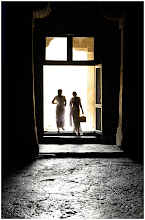
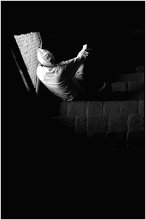
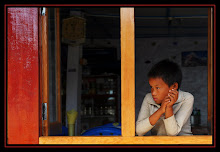
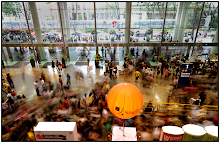

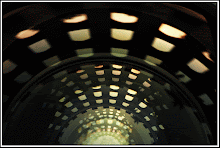
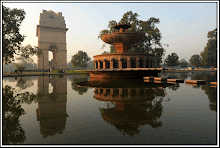
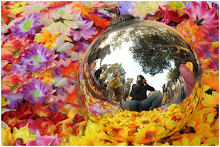
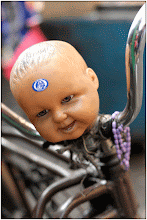
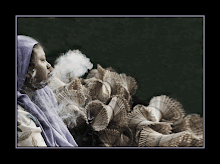

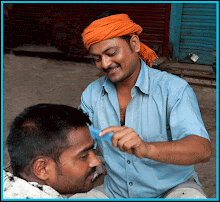
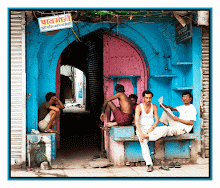
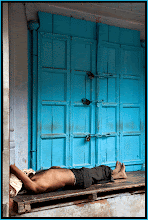

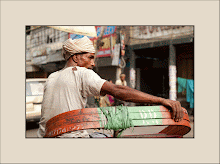
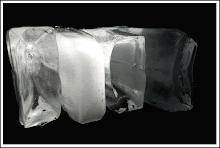
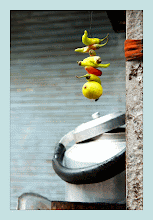


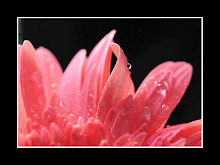

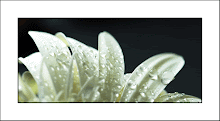
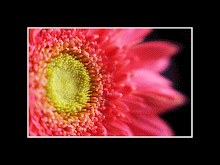

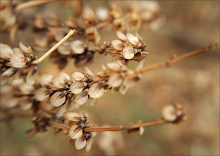
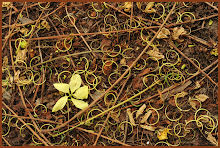
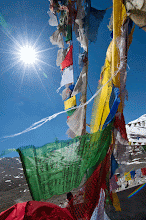
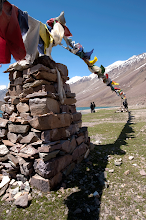
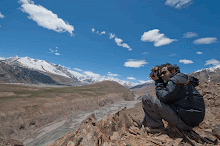

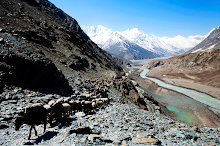

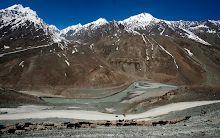
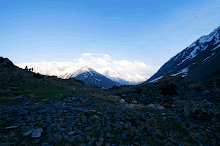

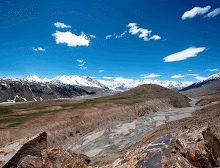

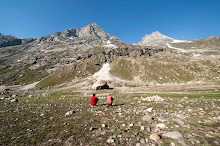

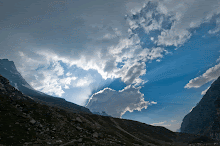


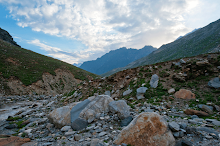
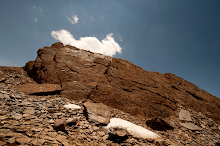




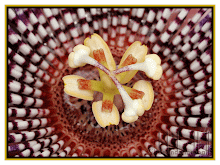

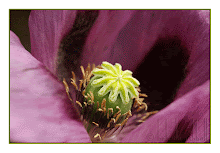



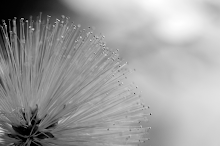
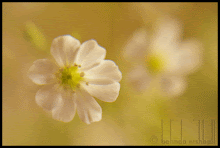

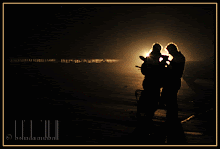

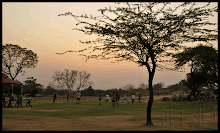


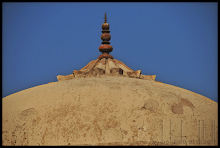
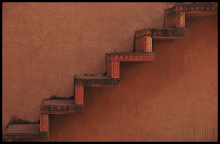
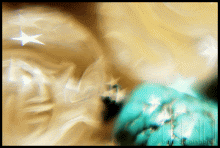
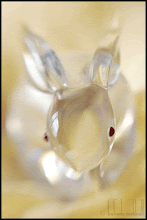
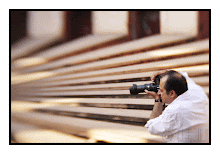
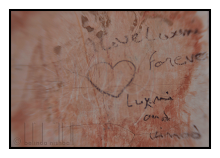
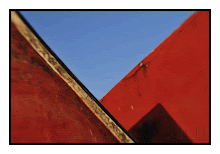
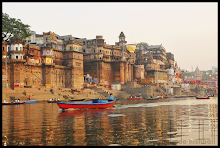
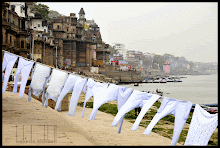
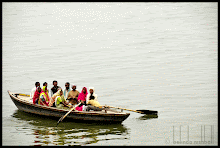

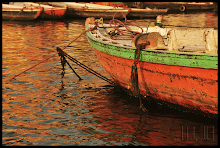


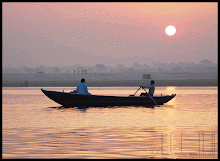

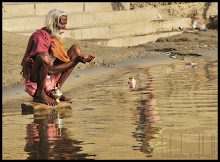
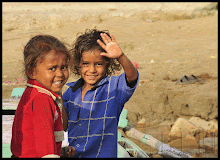
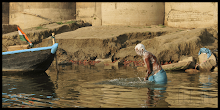
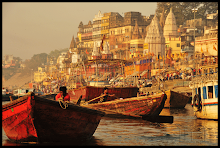



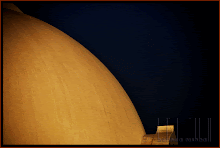
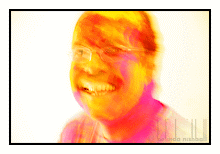

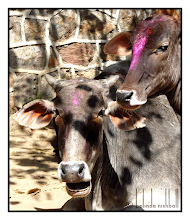
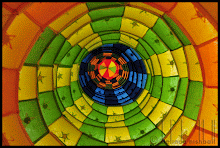
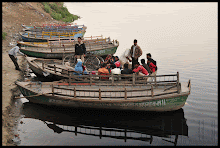
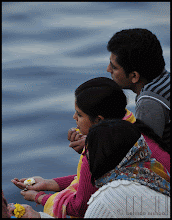


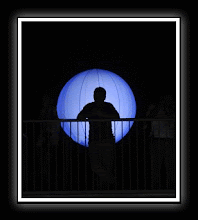
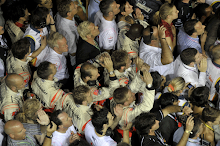
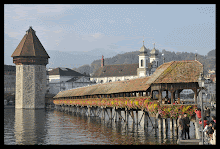



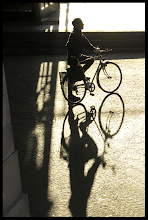

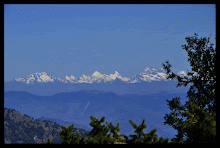
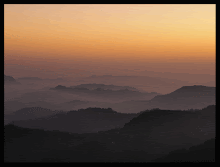

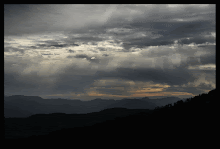

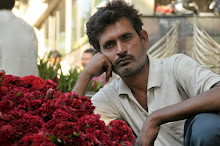

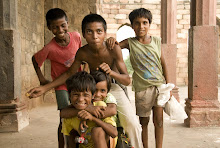
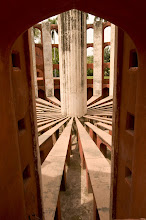
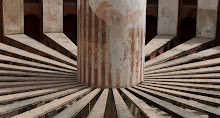
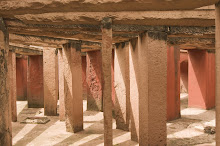
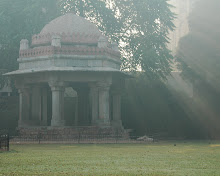
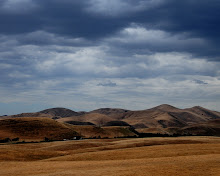
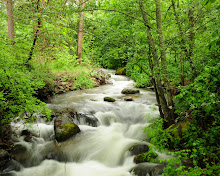
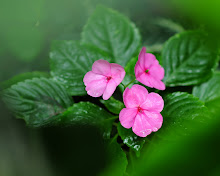

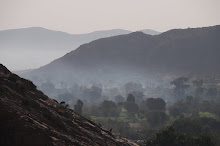
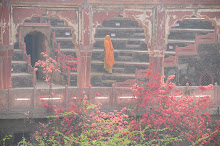












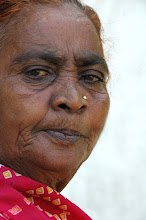
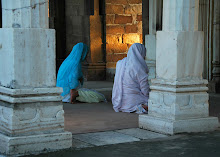





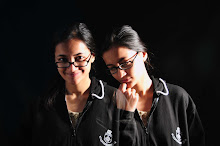
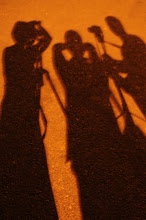
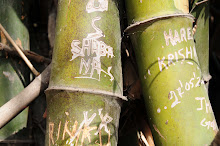
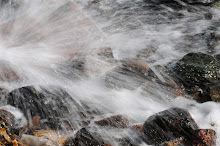
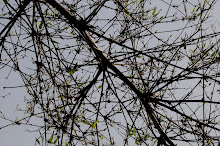
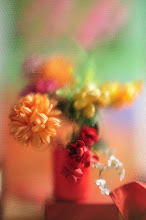


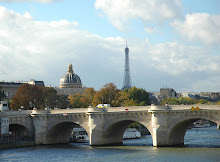
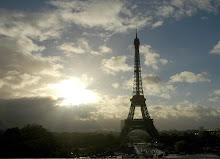
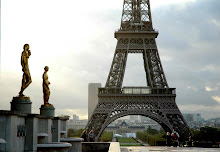
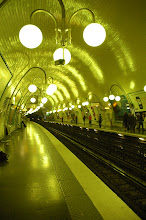
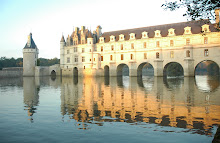


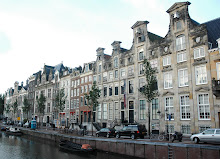
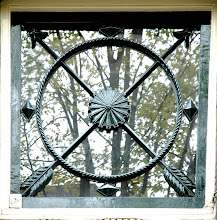
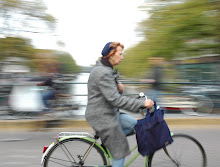
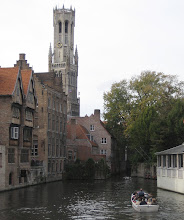
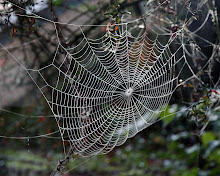
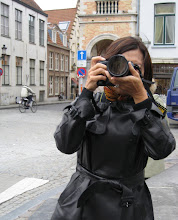



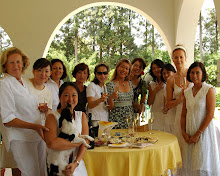
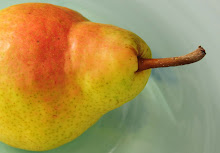
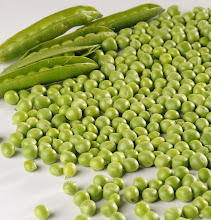
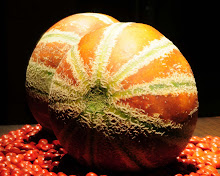
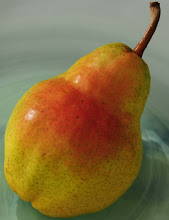
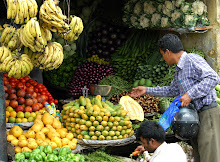






















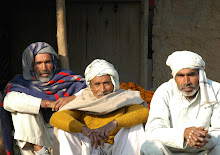
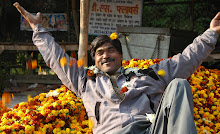






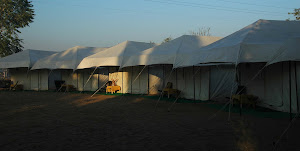
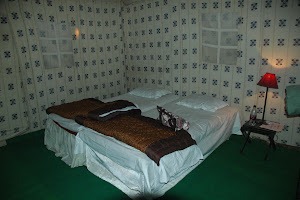



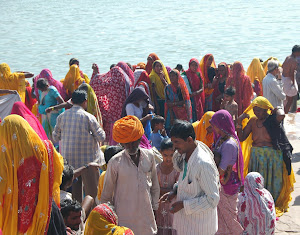
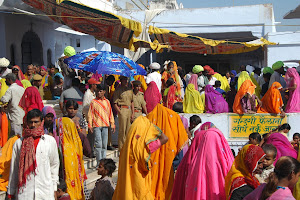

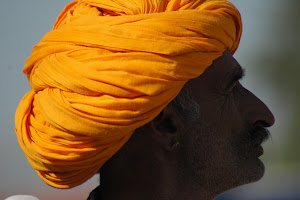
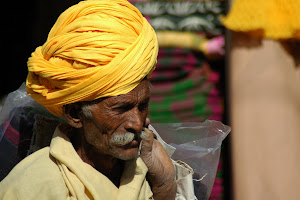
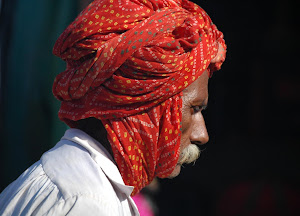
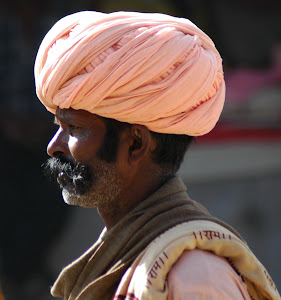



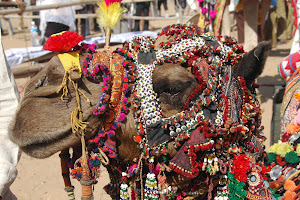
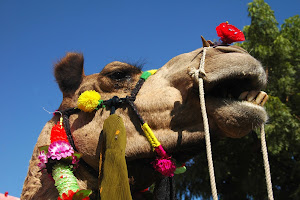
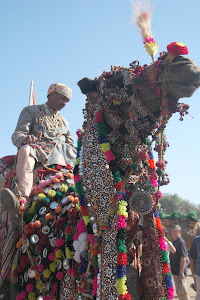
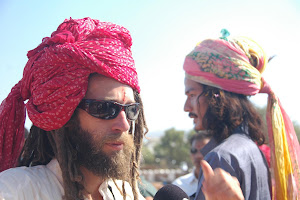
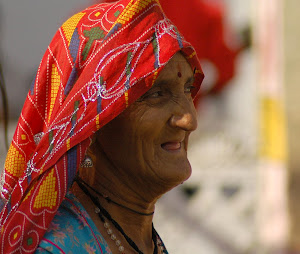
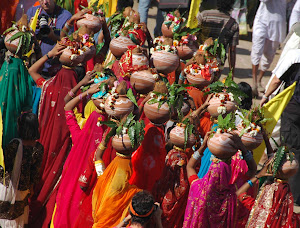
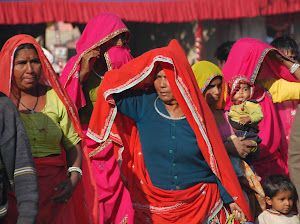
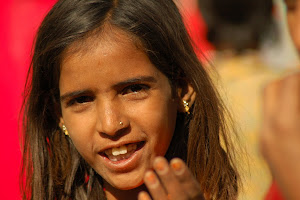
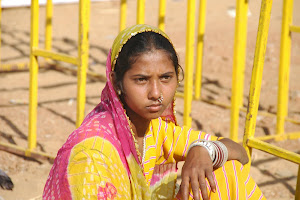
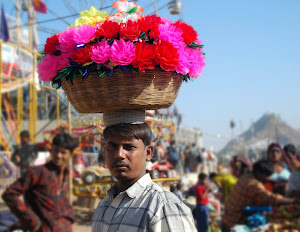
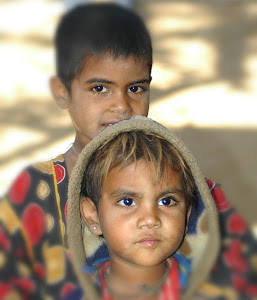
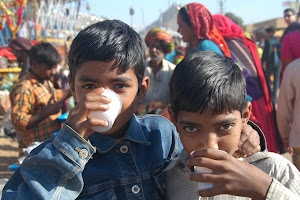
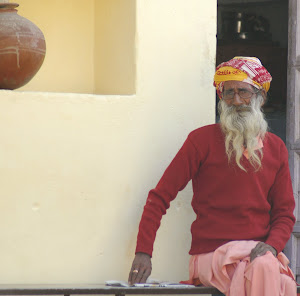
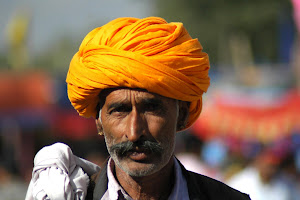
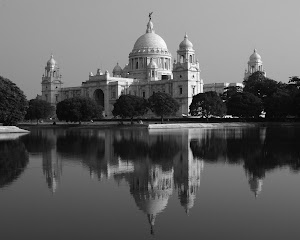

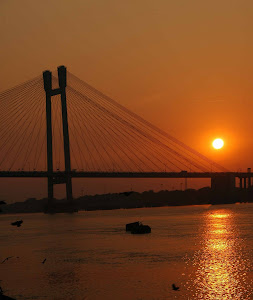
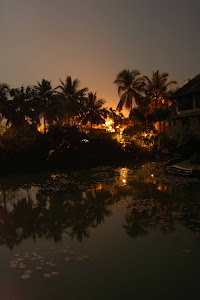



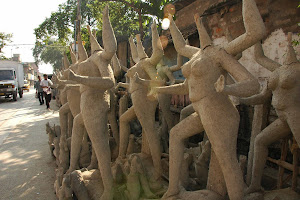
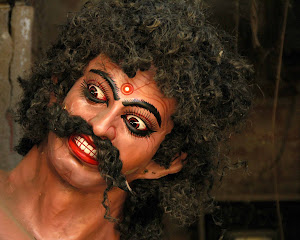

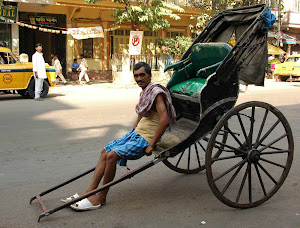


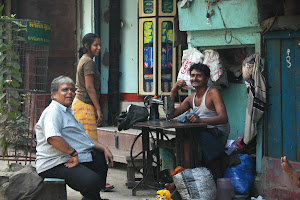
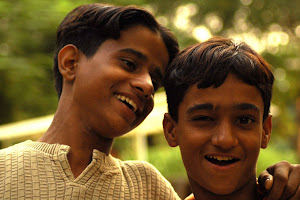
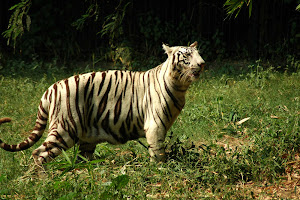
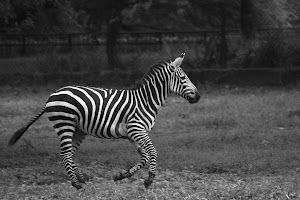
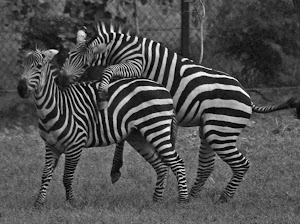
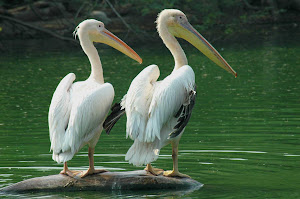
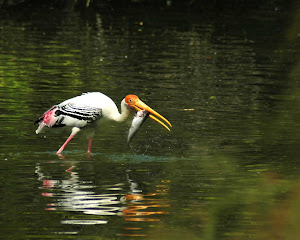

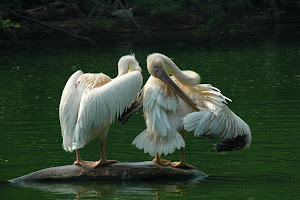
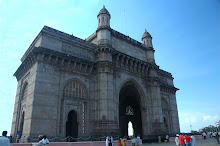
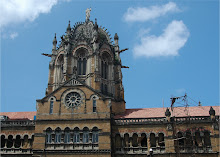
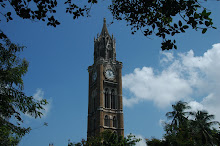
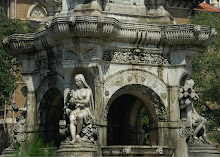
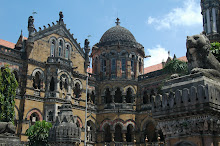
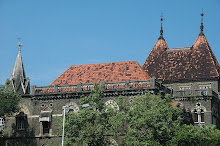
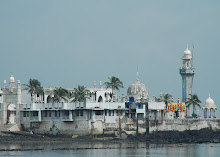
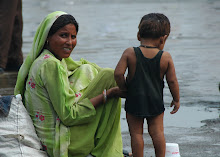
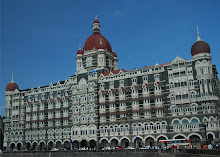
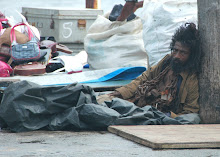

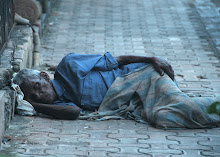
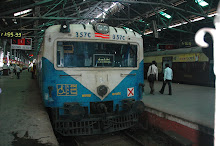
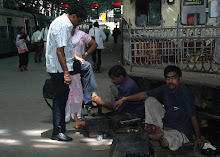
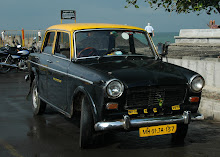
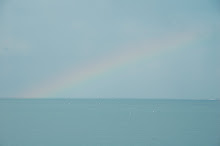
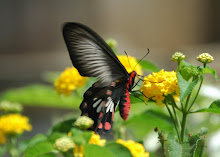

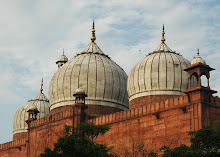
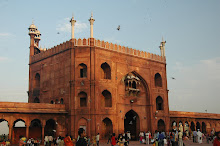
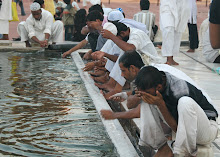
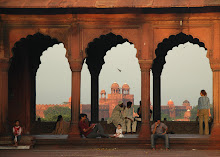

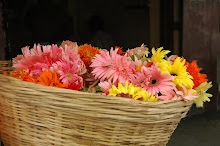
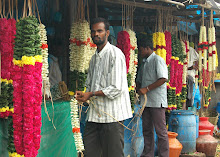
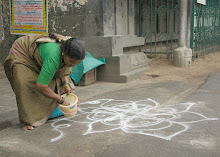
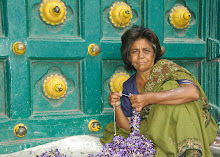
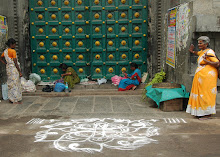
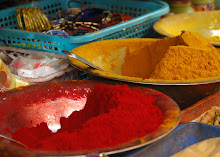
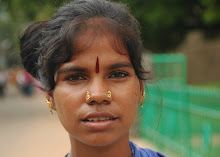
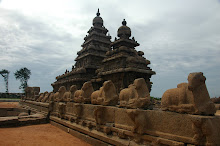
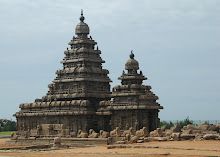
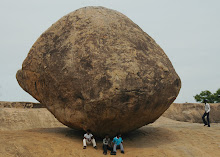
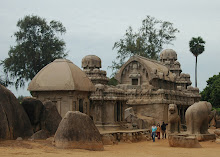

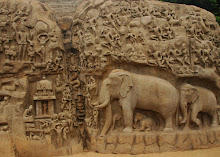
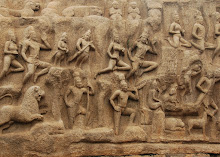
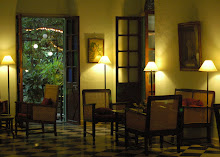
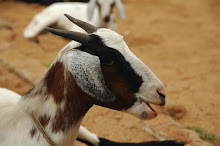

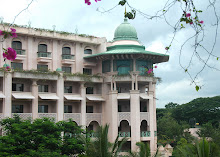


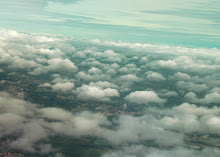

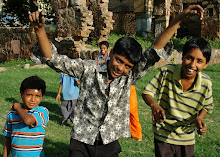
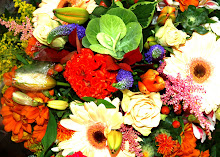
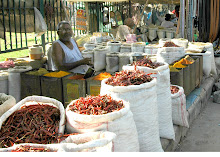+DSC_7019.jpg)
